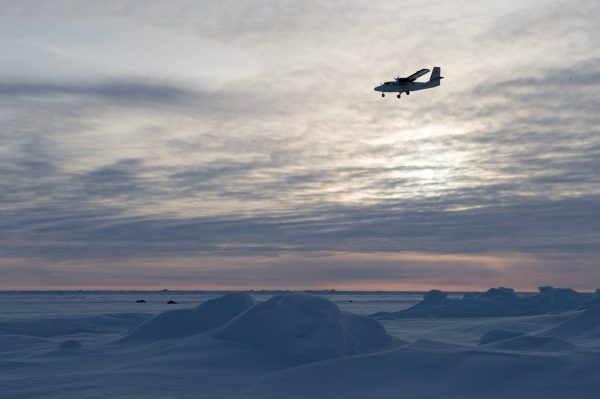
A man survived being struck by a plane that was taking off from sea ice 140 miles north of Deadhorse on the Beaufort Sea, according to the National Transportation Safety Board.
The man, whose name has not been released, worked at the Arctic Submarine Laboratory supporting exercises during which U.S. and British navy submarines surface through the sea ice north of Alaska. That’s according to a preliminary report from the NTSB, which continues to investigate the March 20 plane strike.
NTSB investigator Clint Johnson said the man was trying to snap a photo for his kids and was standing behind a snow berm next to an ice runway as the de Havilland DHC-6 Twin Otter took off.
“He was going to be leaving the ice within the next couple of days,” Johnson said. “He did want to get a picture of these small Lego figurines with the airplane in the background.”
The man told Johnson he talked to the pilot about taking the photo beforehand, though Johnson said the pilot, in a separate interview, did not recall the conversation.
Johnson described what the man says he saw as the plane started taking off:
“The airplane accelerated toward him. It didn’t climb as he anticipated,” Johnson said. “The airplane started a turn to the left, which means the left wing got closer to the ground. The next thing he knew is he saw the wing, and that’s all that he remembers. He remembered waking up in the medivac helicopter on the way to Deadhorse.”
According to the NTSB report, the pilot and co-pilot heard a loud thump, and they had trouble with the plane’s controls. They made an emergency landing back on the airstrip and found the man with serious head and neck injuries.
While the rest of the camp has since been removed from the ice, Johnson said the plane was not flyable and was left behind. He said the Twin Otter was still there as of Tuesday morning, a week later, with substantial damage to its left wing, and there were plans to use a heavy-lift helicopter to retrieve it from the drifting and deteriorating sea ice.
The plane’s owner, Homer-based Bald Mountain Air Service, released a written statement about the incident Tuesday but did not answer questions about the plane’s status.
Casey Grove is host of Alaska News Nightly, a general assignment reporter and an editor at Alaska Public Media. Reach him atcgrove@alaskapublic.org. Read more about Caseyhere.





